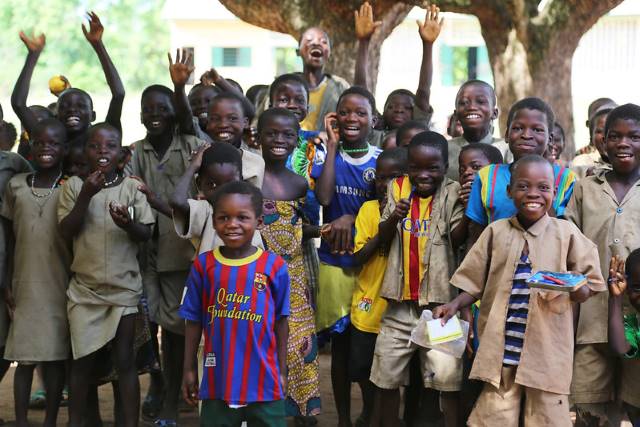Novissi GiveDirectly Alleviates Poverty in Togo
 Togo, a West African country home to 8 million people, wants to put money into the pockets of its most vulnerable citizens in order to alleviate some of the economic burdens of COVID-19. The most impoverished Togolese people, however, are often the most difficult to locate as they tend to live in remote areas and have little or no record of income. To address this issue, the government of Togo partnered with researchers at the University of California and the U.S. charity called GiveDirectly. The team is using artificial intelligence to identify pockets of extreme poverty within its borders. The program called Novissi GiveDirectly intends to stabilize the economy by uplifting those most in need.
Togo, a West African country home to 8 million people, wants to put money into the pockets of its most vulnerable citizens in order to alleviate some of the economic burdens of COVID-19. The most impoverished Togolese people, however, are often the most difficult to locate as they tend to live in remote areas and have little or no record of income. To address this issue, the government of Togo partnered with researchers at the University of California and the U.S. charity called GiveDirectly. The team is using artificial intelligence to identify pockets of extreme poverty within its borders. The program called Novissi GiveDirectly intends to stabilize the economy by uplifting those most in need.
The Initial Novissi Program
“Novissi” translates to “solidarity” in one of the local languages of Ewe. The initial Novissi program already distributed $22 million via mobile money payments to 600,000 citizens who live in urban areas. Voting registration provided the state with information about a citizen’s financial status and the state used this information to determine eligibility. Then, payment was sent via mobile devices. However, this same methodology could not be applied to the many Togolese who live outside the cities and identify as informal workers. The government wanted to target people in rural areas living on less than $1.25 per day without the means to put themselves on the government’s radar. Presented with this challenge, a second phase of the program emerged: Novissi GiveDirectly.
Novissi GiveDirectly
In Togo, Novissi GiveDirectly utilizes satellite imagery, mobile data and artificial intelligence as a poverty solution. Satellites capture photos from every square kilometer of the country, giving insight into villages’ local infrastructure, the housing materials used and even the size of land plots.
Mobile data also provides researchers with a major clue in the search for those carrying the biggest financial burdens. In general, impoverished people use cellphones less often, receive more calls than they make and have lower mobile money balances. Artificial intelligence then analyzes the mountains of data to identify who is eligible to receive aid from the program by estimating an individual’s wealth. Registration is as simple as a Togolese citizen dialing #855 to register for the program.
The Impact on Locals
Eric Dossekpli is a 49-year-old farmer whose livelihood has experienced a direct impact from COVID-19. His market goods were not selling because people were not buying due to the financial distress of the pandemic. This left him without an income and unable to afford fertilizer to continue growing crops.
When Dossekpli heard about Novissi GiveDirectly, he immediately registered. Once Novissi GiveDirectly confirmed his eligibility, he received an instant mobile payment of $13. Novissi GiveDirectly gives $13 to men and $15 to women every month for five months. Women receive more money due to their roles as caregivers. The money received meant he could pay for his children’s tuition and afford food. “I can’t imagine how I was going to live if not for this money. All I can say is thanks,” said Dossekpli.
The Road Ahead
What makes the program unique is that it operates using data that is already available. This makes it quick and comprehensive, two characteristics that are critical during a crisis. The program aims to distribute $10 million to 114,000 Togolese people over a period of a few months. The Novissi GiveDirectly model is currently being considered for Nigeria and Bangladesh.
Though Novissi GiveDirectly has emerged in response to a crisis, one cannot help but consider the potential benefits of such targeted investments long-term. If $13 can pay for the education of four Togolese children during a global pandemic, a sustained investment of this nature could boost an entire economy, allowing everybody to reap the rewards.
– Greg Fortier
Photo: Flickr
